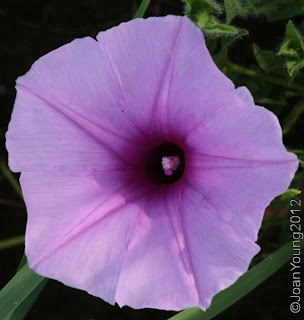Family Commelinaceae
This is a spreading plant which does not grow very high and although it is common in our bush areas, I cannot find much information about them besides general info on the family it comes from.
Distribution and habitat
Widespread in Africa, Madagascar and the Arabian Pennisula, in forests, savanna and grassland. Very common in southern Africa. The plant is a spreading herb that flourishes in sandy soil in rocky areas where it spreads rapidly.
Ecology
The plant grows very well in a wet sandy soils or during good rainfall seasons. The major pollinators of this plant are insects, mainly ants. By using the plants, human beings also contribute to seed dispersal.
Uses and cultural aspects
The Ndebele use a decoction of the roots in the treatment of venereal diseases and as a medicine for women suffering unduly during the menstrual period. The ash of the plant is used as one of the ingredients in a Sotho charm application to the loins for sterility and an infusion is drunk for the same purpose. It can also be burned and the ash is dug in around plants as a fertilizer. Pigs are fed the leaves of this plant. Horticulturally, it is a useful, pretty plant in the garden.
It is good to cultivate this plant as a decorative flowering plant in your garden or as food for animals such as pigs.
The propagation of this species takes place easily, because even the stem nodes pressed into wet, sandy soil will grow. It is also easy to cultivate from seed. Plant it in a sandy soil or rocky areas. Given more water it will exceed its normal height.



















































